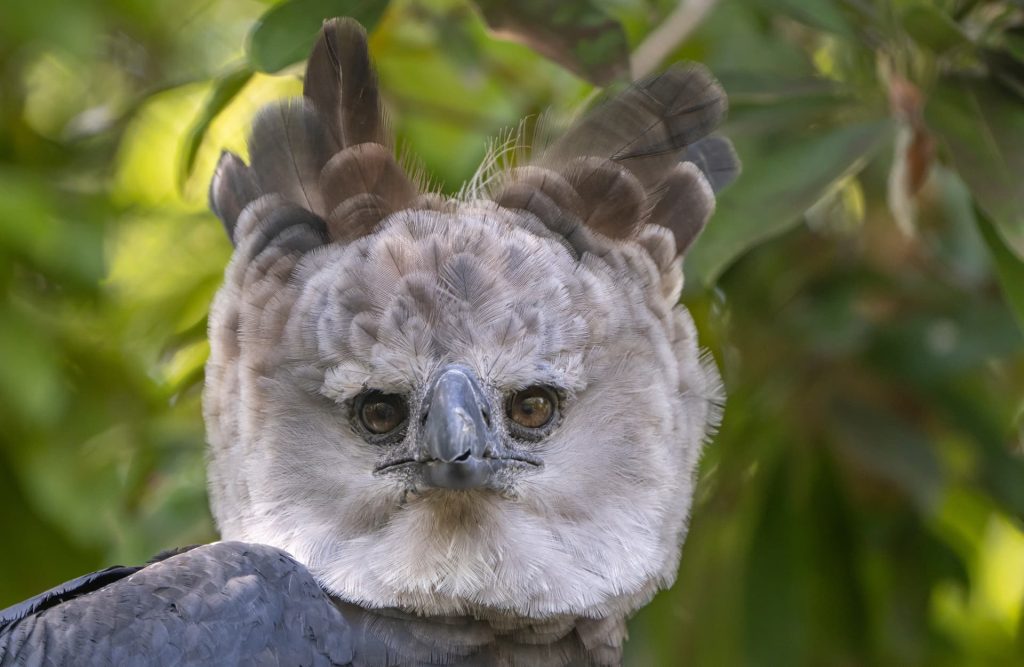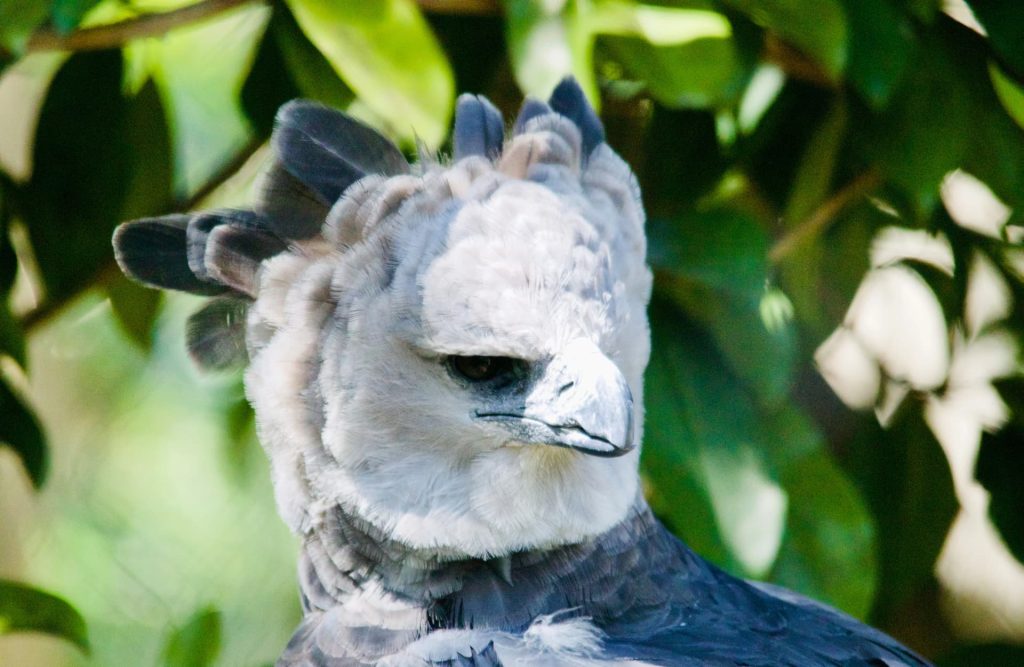The Harpy Eagle is one of the most sought after species for avid birdwatchers for many reasons, the most important being the fact that it’s considered as the biggest eagle species in the world. For this opportunity, Peru Amazon Trips will share with you some information about this species and the posibility of checking them out in Peru.
This formidable raptor’s height is close to the meter (37.5 inches) in length and its distinctive appearance is characterized by a gray head, a black banded chest, dusky upperparts, and a white underbelly.
Younger specimens difference their aspect because of their grayer aspect. As with many bird species, the younger eagles go through molting phases as they grow in order to get their adult and final plumage which torns them into a more obscure bird.

The Harpy eagles are distinguishable through any of their phases however due to their pronounced crest, which makes them stand out from other species, this and their thick proportion (notable in their legs, beak and chest) separates them in the appearance from other crested eagles.
Their habitat is usually in the forests interiors with lower chances of being spotted in open skies.
Sacred Species
Among many Amazonian indigenous tribes, the harpy eagle (Harpia harpyja) holds sacred symbolism in the Amazon as the embodiment of tribal leaders – a representation of fierceness and prowess. This formidable predator possesses eyesight eight times more acute than humans, rendering it one of the most fearsome hunters prowling the Peruvian forests.
Its strength is unparalleled, capable of seizing sloths from treetops mid-flight and carrying prey weighing up to 10 kilograms.
For numerous native ethnic groups, the harpy is revered as Uiraçu, the father of all avian beings. Adorning ceremonial garments with this bird’s feathers was traditionally reserved for solemn occasions like deaths or specific celebrations.

While occupying the highest tier of the food chain with no natural predators besides humans, and ranking among the world’s largest raptors, the harpy eagle faces endangerment due to dwindling forest habitats. This species requires a vast territory spanning approximately 100 square kilometers to thrive, highlighting the urgent need for conservation efforts.
Scientific Research Efforts
The world’s largest eagle species exerts a captivating allure not only upon indigenous populations but also among ornithologists and scientists globally.
For many researchers, the opportunity to observe these magnificent birds within their natural habitat is a rare privilege. Harpies serve as vital indicators, their presence reflecting the health and vitality of the ecosystem they inhabit. When they disappear, it signals a distressing lack of prey or sufficient forested area for their survival. This underscores the critical importance of protected areas in ensuring the continuation of this species, as efforts to breed them in captivity have yielded unsatisfactory results to date.
Historically, before the rampant expansion of deforestation, it was possible to encounter the Harpy eagle within the Amazon with more success.
Harpy eagles are formidable predators, particularly targeting species within the psittacidae family, which includes macaws, cockatoos, and parrots. However, their dietary preferences extend to fish, snakes, lizards, and notably, mammalian prey such as monkeys, agoutis, and sloths.

Join Peru Amazon Trips to visit the Amazon and have a chance to get a sight of these magnificent birds.
Contact us for a thorough list of options to arrange a trip to Tambopata, where chances of spotting Harpy Birds are increased in Peruvian territory.


